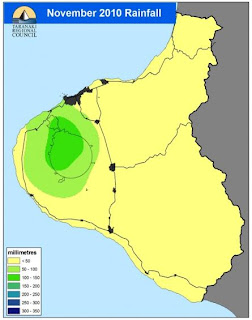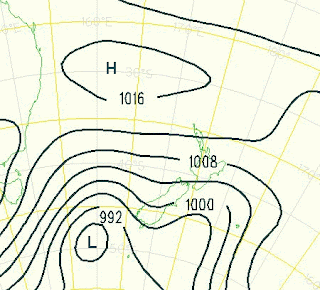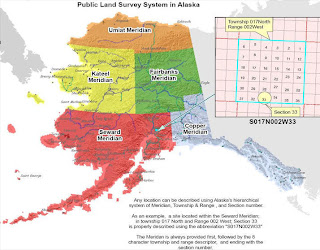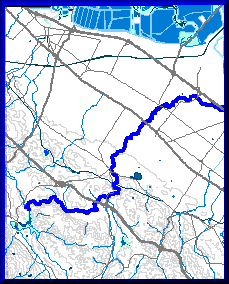http://www.uwsp.edu/geo/faculty/ritter/geog101/textbook/essentials/map_types.html
Dasymetric map is a thematic map used to classify volumetric data. This map is used often for population density since it has the ability of realistically place data.
Sunday, December 5, 2010
Cartogram
http://www.cbr.washington.edu/papers/jim/draft.html
This above cartogram shows each county in the United States rescaled according to population. The map is distorted to convoy the information in an alternate variable.
This above cartogram shows each county in the United States rescaled according to population. The map is distorted to convoy the information in an alternate variable.
Dopplar Radar
http://www.bom.gov.au/weather/radar/about/new_radar_services.shtml
A Doppler radar is able to show the path of a storm and type of precipitation. It can estimate two parameters, reflectivity and rotational velocity.
A Doppler radar is able to show the path of a storm and type of precipitation. It can estimate two parameters, reflectivity and rotational velocity.
Cartographic Animations
http://www.wiu.edu/users/cre111/older/CGFinal/paper.htm
Cartographic animations are able to show changes in data in a continues fashion.
Cartographic animations are able to show changes in data in a continues fashion.
Hypsometric Map
http://www.rrcap.unep.org/centralasia/reapreport/map.cfm
Hypsometric maps are used to show differences in elevations in maps and different colors are used to display the differences.
Hypsometric maps are used to show differences in elevations in maps and different colors are used to display the differences.
Isohyet

An isohyet uses contour lines to represent the amount of rainfall on a map. Each color in the above map shows the different amount of perception month to data for that location.
Isobars

Isobar maps are used to display atmospheric pressure over an area.
Isopach
http://www.searchanddiscovery.net/documents/2007/07022lash/index.htm
This is an isopach map of Oatka Creek Shale and limestone thickness. The map is measured in feet. This site used many different maps to represent information. An isopach map uses contour lines of equal thickness over an area.
This is an isopach map of Oatka Creek Shale and limestone thickness. The map is measured in feet. This site used many different maps to represent information. An isopach map uses contour lines of equal thickness over an area.
Isopleths
http://www.cbr.washington.edu/papers/jim/draft.html
Isopleths generalized and simplifies data with continuous distribution. They are more commonly used to map areas containing elevations, amounts of precipitation, and numerous other measurements. The lines connect points of equal values.
Isopleths generalized and simplifies data with continuous distribution. They are more commonly used to map areas containing elevations, amounts of precipitation, and numerous other measurements. The lines connect points of equal values.
DRG
http://www.tceq.state.tx.us/gis/metadata/drg_met.html
DRG or digital raster graphic is a scanned image of a standard series topographical map. On average these maps contain 250 dots per inch. These maps are standard for the U.S. Geological Survey.
DRG or digital raster graphic is a scanned image of a standard series topographical map. On average these maps contain 250 dots per inch. These maps are standard for the U.S. Geological Survey.
Standardized Choropleth Maps
http://www.statcan.gc.ca/pub/92f0138m/2008003/figures/5200001-eng.htm
A standardized choropleth maps has data that has been standardized to allow for easier comparison of data in different areas.
A standardized choropleth maps has data that has been standardized to allow for easier comparison of data in different areas.
Bivariate Choropleth Map
http://proceedings.esri.com/library/userconf/proc99/proceed/papers/pap171/p171.htm
Bivariate choropleth maps display two forms of information on a single map. Different colors are used to portray the two types of information at the same time. They have the ability to display how information or variables can relate to each other.
Bivariate choropleth maps display two forms of information on a single map. Different colors are used to portray the two types of information at the same time. They have the ability to display how information or variables can relate to each other.
Portolan Chart
http://www.lumenartis.net/index.php?main_page=product_info&cPath=68&products_id=183&language=en
This portolan map depicts the Mediterranean, the Black Sea, the Sea of Azov and the Atlantic coasts of Europe and North Africa. This is another example of cartography from the medieval era.
This portolan map depicts the Mediterranean, the Black Sea, the Sea of Azov and the Atlantic coasts of Europe and North Africa. This is another example of cartography from the medieval era.
T-O Map
http://www.palaeos.com/Paleozoic/Ordovician/Tremadoc.htm
A T-O map is an medieval world map and is one of the earliest known maps of its type. It is a representation of the physical known world at that time.
A T-O map is an medieval world map and is one of the earliest known maps of its type. It is a representation of the physical known world at that time.
Statistical Map
http://www.arabdev.org/map
This is an example of a statistical map. It is a very simple map displaying the number of people that can be found online in northern Africa and the Middle East.
This is an example of a statistical map. It is a very simple map displaying the number of people that can be found online in northern Africa and the Middle East.
Saturday, December 4, 2010
Triangular Plot
http://www.ex-parrot.com/~chris/wwwitter/20050407-it_doesnt_matter_how_you_vote_either_way_your_planet_is_doomed.html
A triangular plot makes it easy to show the relation between three variables. This above graph does show different voting styles with the center dot shows what was expected by the voters.
A triangular plot makes it easy to show the relation between three variables. This above graph does show different voting styles with the center dot shows what was expected by the voters.
Wind rose
http://www.vistadatavision.com/reports-2/wind-rose/
A wind rose is used to give a view how wind speed and direction are distributed in a location. The site I found this example on had multiple other example of how a wind rose is used and calculated.
A wind rose is used to give a view how wind speed and direction are distributed in a location. The site I found this example on had multiple other example of how a wind rose is used and calculated.
Climograph
http://arsc.arid.arizona.edu/migratory/veg_tdf.html
Climogaphs displays the monthly precipitation and and temperature conditions for an area. The precipitation is represented by the bar graph and the line graph shows the temperature. The above graph is a representation of an Arizona regions precipitation.
Climogaphs displays the monthly precipitation and and temperature conditions for an area. The precipitation is represented by the bar graph and the line graph shows the temperature. The above graph is a representation of an Arizona regions precipitation.
Similarity Matrix
http://cgi.mtc.sri.com/Cluster-Lab/
Similarity matrix shows similar genes on a scale of 0 to 1, as seen above. The greater the similarity of two objects the higher the value of measure.
Similarity matrix shows similar genes on a scale of 0 to 1, as seen above. The greater the similarity of two objects the higher the value of measure.
Parallel Coordinate Graph
http://informationandvisualization.de/blog/knime-interactive-views
Parallel coordinate graphs is used to visualize multidimensional data and can be used to explore the relationships among variables. There is a connection throughout the graph with the information.
Parallel coordinate graphs is used to visualize multidimensional data and can be used to explore the relationships among variables. There is a connection throughout the graph with the information.
Box Plot
http://www.physics.csbsju.edu/stats/box2.html
A box plot can go by different names. It a great and simple way to display five areas of information. In one look you are able to see the min and max amounts, the average of the information, and the bottom 25% and top 75%.
A box plot can go by different names. It a great and simple way to display five areas of information. In one look you are able to see the min and max amounts, the average of the information, and the bottom 25% and top 75%.
Population Profile
mailto:http://www.bibliotecapleyades.net/sociopolitica/esp_sociopol_depopu14b.htm
A population profile is a chart showing the of people in the the age group. This above graph represents industrialized countries only.
A population profile is a chart showing the of people in the the age group. This above graph represents industrialized countries only.
Scatter Plot
http://onlinestatbook.com/chapter4/intro.html
Scatter plots are a relationship between two variables. There can be a common trend in most scatter plots if the dots head upward as in the graph above then the graph is positive. If the graph is downward then the graph is negative.
Scatter plots are a relationship between two variables. There can be a common trend in most scatter plots if the dots head upward as in the graph above then the graph is positive. If the graph is downward then the graph is negative.
Index Value Plot
http://waterwatch.usgs.gov/?m=real&w=plot
An index value plot is a type of visualization map. It depicts the relativity of all values to an indexed value. This map shows the averaged stream slow in North Carolina.
An index value plot is a type of visualization map. It depicts the relativity of all values to an indexed value. This map shows the averaged stream slow in North Carolina.
Lorenz Curve
This an Accumulation Plot or it can also be known as a Lorenze Curve. The dark line represented in the graph is the lorenz curve. This above example shows household incomes and expenditures, it does contain more information then a basic graph but you are to see how it works.
Bilateral Graph

I was unable to find a bilateral graph that was not already saved to someones blog site. These graphs are used to represent two variables that are related to each other. While one rises the other decreases and this is what can be seen one the graph.
Friday, December 3, 2010
Pie Chart
http://bigthink.com/ideas/21259
A Pie chart is an example of geovisualization. This is an example of countries involvement in Antarctica. By walking in a complete circle around the South Pole you would be able to visit all the claims made on Antarctica.
A Pie chart is an example of geovisualization. This is an example of countries involvement in Antarctica. By walking in a complete circle around the South Pole you would be able to visit all the claims made on Antarctica.
Sunday, November 21, 2010
Aerial Infrared
http://www.thousandislandslife.com/backissues/archive/tabid/393/articletype/articleview/articleid/158/aerial-infrared-photographs.aspx
Aerial infrared photographs are able to show greater detail, such as vegetation. The photograph shown above is part of group of photographs showing change to the surface culture of the area. Infrared photographs also can show contrast of water. That can be seen in a better example on the link above.
Aerial infrared photographs are able to show greater detail, such as vegetation. The photograph shown above is part of group of photographs showing change to the surface culture of the area. Infrared photographs also can show contrast of water. That can be seen in a better example on the link above.
U.S. Public Land Survey System

PLSS is set up by first establishing an initial points for a region. Most of the United States follows this system but the original thirteen colonies, Texas, parts of Florida, and a few other small locations. It is usually divided into 6-square mile townships and then townships are divided into 36 1-mile squares.
The site below also contains some great information about the PLSS process and maps to help gain a deeper understanding.
http://www.nationalatlas.gov/articles/boundaries/a_plss.html
Digital Orthographic Quarter Quads
http://www.tceq.state.tx.us/gis/doqtnrcc.html
Digital orthographic quarter quads or DOQQ combines the mixture of an aerial photograph with the geometric qualities that can be found in a map. These maps are useful because they display some features that can be left out of or generalized in a standard map. They can also be used to find direct measurement of distances, areas, angles, and positions.
Digital orthographic quarter quads or DOQQ combines the mixture of an aerial photograph with the geometric qualities that can be found in a map. These maps are useful because they display some features that can be left out of or generalized in a standard map. They can also be used to find direct measurement of distances, areas, angles, and positions.
Digital Line Graphs
http://geography.wr.usgs.gov/sfcreek/dlg.html
Digital line graphs or GIG contain digital vector data that represents the cartographer information. They show information such as boundaries, roads, and utility lines. The map above is representing the San Francisco Creek.
Digital line graphs or GIG contain digital vector data that represents the cartographer information. They show information such as boundaries, roads, and utility lines. The map above is representing the San Francisco Creek.
Friday, November 19, 2010
Black and White Aerial
http://www.alamedainfo.com/alameda_antique_maps.htm
Aerial photographs are divided by the film type, and in this example black and white film is used. This is an aerial shot of Alameda, Ca Bay farm in 1939. This photograph helps display why the island is referred to as "Bay Farm Island".
Aerial photographs are divided by the film type, and in this example black and white film is used. This is an aerial shot of Alameda, Ca Bay farm in 1939. This photograph helps display why the island is referred to as "Bay Farm Island".
Planimetric Map
http://www.nps.gov/history/history/online_books/fova/clr2-5c.htm
Planimetric map are maps that do not show any relief on them. Street maps are a great example of this type of map. They can show rail roads, sidewalks, roads, and highways. It is also known as a line map.
Planimetric map are maps that do not show any relief on them. Street maps are a great example of this type of map. They can show rail roads, sidewalks, roads, and highways. It is also known as a line map.
Mental Map
http://fasica.altervista.org/adam/adam_en.htm
Mental map are very interesting and very personal to a person. A mental map is one's internal map of a location. They are abstracted representations of real locations.The site listed showed multiple maps of Amsterdam by different people. The point of the exercise was to show how one's interpretation of a city is different then the actual location and from person to person it can differ.
Mental map are very interesting and very personal to a person. A mental map is one's internal map of a location. They are abstracted representations of real locations.The site listed showed multiple maps of Amsterdam by different people. The point of the exercise was to show how one's interpretation of a city is different then the actual location and from person to person it can differ.
Sunday, November 14, 2010
Kriging Map
http://www.gisdevelopment.net/proceedings/mapindia/2006/environment%20and%20forestry/mi06envi_148.htm
A kriging map is used to map continuous point data. It uses a mathematical procedure to produce the information. Then map on the left is to show the CO pollutant level while the map on the right is to show the prediction error of CO pollutant.
A kriging map is used to map continuous point data. It uses a mathematical procedure to produce the information. Then map on the left is to show the CO pollutant level while the map on the right is to show the prediction error of CO pollutant.
Proportional circle map
http://geographyfieldwork.com/DataPresentationMappingTechniques.htm
This is another example of a point pattern map. A proportional circle map is able to give more information in the circles since they are pie graphs. The circles themselves give information and then is able to be broken down more with the graph. In this map there are five different circle possibilities.
This is another example of a point pattern map. A proportional circle map is able to give more information in the circles since they are pie graphs. The circles themselves give information and then is able to be broken down more with the graph. In this map there are five different circle possibilities.
Dot Density Map
http://www.flutrackers.com/forum/showthread.php?t=6379
This map is fulled with multiple information but is also a good a example of a dot density map. In this map one dot equals 7 herds or swine farms in a area. It is to display the effect of the virus H3N2 in the areas. To me this map has more of a clustered look since some farms are far apart, while some areas are heavily populated.
This map is fulled with multiple information but is also a good a example of a dot density map. In this map one dot equals 7 herds or swine farms in a area. It is to display the effect of the virus H3N2 in the areas. To me this map has more of a clustered look since some farms are far apart, while some areas are heavily populated.
Range-graded Proportional Crcle Map
http://www.neiu.edu/~ejhowens/377/examples.htm
Proportional map is a point pattern map, instead of displaying information by dots it uses a circle to do so. The circle size relates to the variable being measured and there is a set number of circles used. The above map is displaying the Filipino population in selected states and it is using a set of four circles.
Proportional map is a point pattern map, instead of displaying information by dots it uses a circle to do so. The circle size relates to the variable being measured and there is a set number of circles used. The above map is displaying the Filipino population in selected states and it is using a set of four circles.
Isotachs Map
http://atm.ucdavis.edu/~grotjahn/course/atm111/lect/Map_Interp_Fcsts/gfs_300.htm
The above is a isotach map which is a form of a contour map. These maps are used to display the wind speed in locations. The site this map was found at displays multiple maps of wind movement in The United States.
The above is a isotach map which is a form of a contour map. These maps are used to display the wind speed in locations. The site this map was found at displays multiple maps of wind movement in The United States.
Sunday, November 7, 2010
Bathymetric Map
http://www.epa.gov/ne/boldkids/scienceonboard.html
A bathymetric map is a contour representaion of the elevation of the sea floor. Looking at the above map, the purple areas shows the deepest areas along thiese islands.
A bathymetric map is a contour representaion of the elevation of the sea floor. Looking at the above map, the purple areas shows the deepest areas along thiese islands.
LIDAR Map
http://coralreefs.wr.usgs.gov/mapping_lidar.html
LIDAR or Laser-based Imagery utilizes laser pulses to make a detailed topographical map. It is also able to gather data up to three times greater in depth then aerial photographs. The above example shows a hole that is found in the coral reef in South Moloka'i.
LIDAR or Laser-based Imagery utilizes laser pulses to make a detailed topographical map. It is also able to gather data up to three times greater in depth then aerial photographs. The above example shows a hole that is found in the coral reef in South Moloka'i.
Flow Map
This is a flow map of trade between The United States and China. The width of lines are proportional to quantity.
Propaganda Map
http://www.guardian.co.uk/artanddesign/gallery/2010/jan/26/british-library-map
This site had a great amount of maps showing propaganda. It is an exhibit in a British Library and the whole point of the exhibit is to demonstrate how maps have multiple uses. This map above is a Nazi representation of Churchill being a demonic octopus trying to take control of Africa and the Middle East.
Propaganda maps are used to manipulate opinions and create a visual that when you think of someone or something that is the first thing you think of.
This site had a great amount of maps showing propaganda. It is an exhibit in a British Library and the whole point of the exhibit is to demonstrate how maps have multiple uses. This map above is a Nazi representation of Churchill being a demonic octopus trying to take control of Africa and the Middle East.
Propaganda maps are used to manipulate opinions and create a visual that when you think of someone or something that is the first thing you think of.
Thursday, October 21, 2010
Histogram
http://www.ibm.com/developerworks/linux/library/l-r2/Histogram's displays the frequency of information. The histogram displayed shows temperature in close range compared with frequency.
Star Plots
http://www.survo.fi/gallery/038.html
Star Plots are a very interesting example of a map. They are a type of geovisualization. Each star represents a single observation and each plot consists of radii, each spoke representing one of the variables.
Star Plots are a very interesting example of a map. They are a type of geovisualization. Each star represents a single observation and each plot consists of radii, each spoke representing one of the variables.
Wednesday, October 20, 2010
Stem Leaf Plot
http://www.mathematik.uni-kassel.de/didaktik/DataSharing/ROADKILL/OurOwnAnalysis.html
A steam leaf plot displays the frequency of data. The above plot display the frequency of road kill. I thought this was a unique use of this graph. This represents what animals are very rarely hit to very commonly hit.
A steam leaf plot displays the frequency of data. The above plot display the frequency of road kill. I thought this was a unique use of this graph. This represents what animals are very rarely hit to very commonly hit.
Subscribe to:
Posts (Atom)













































